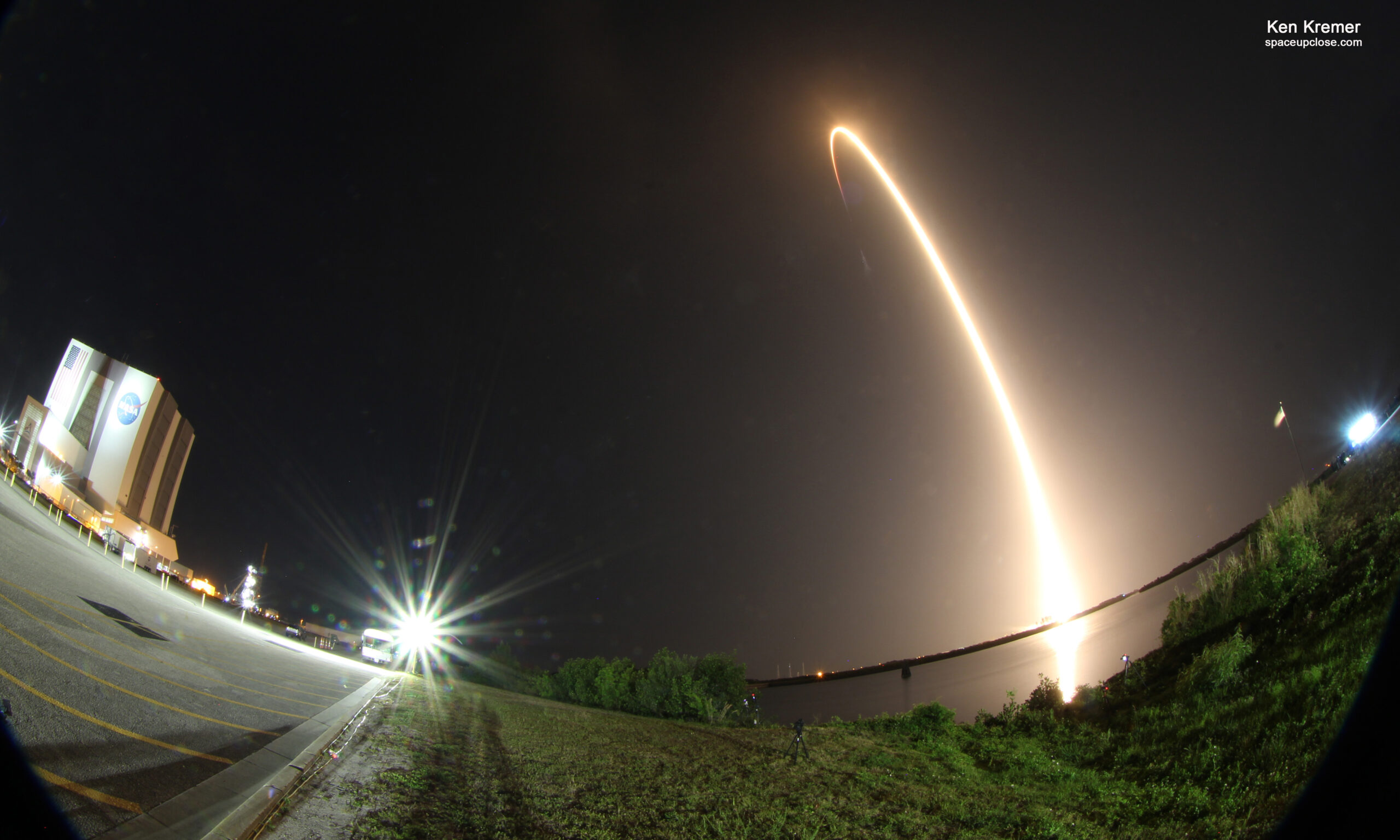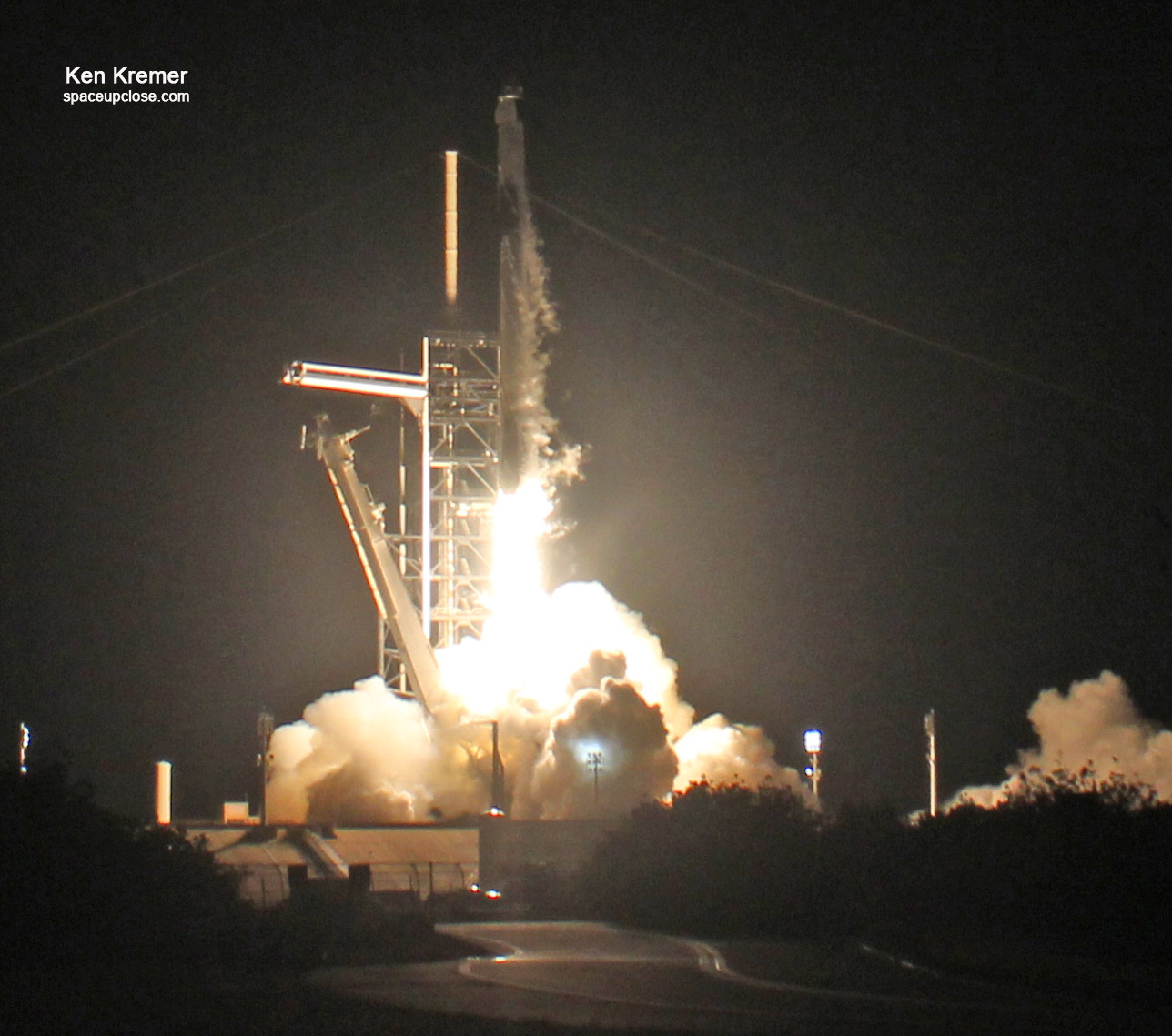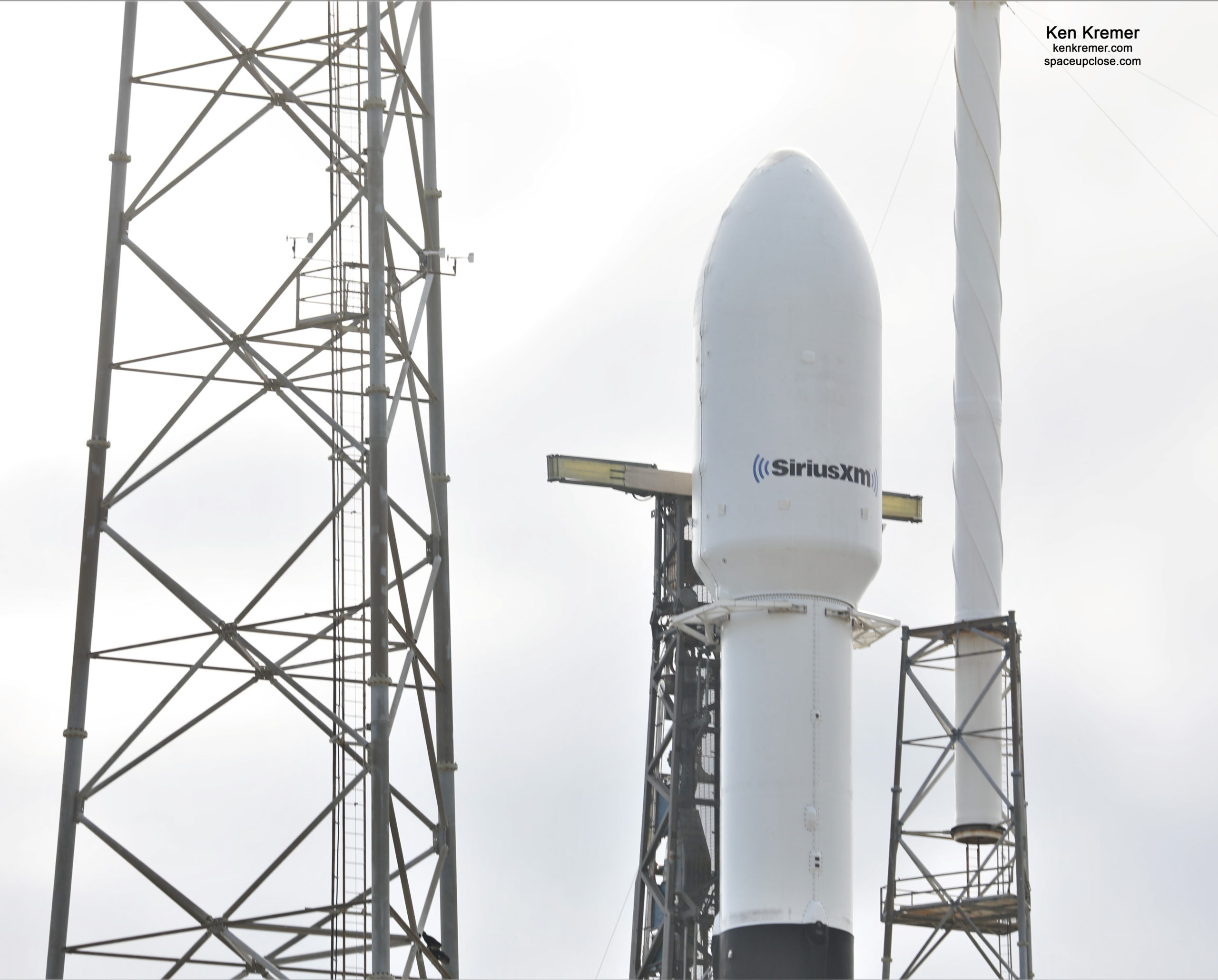
For SpaceUpClose.com & RocketSTEM
CAPE CANAVERAL SPACE FORCE STATION, FL – SpaceX is now targeting Sunday, Dec. 13 for the lunchtime liftoff of a veteran Falcon 9 rocket carrying the Sirius SXM-7 digital audio radio satellite for mobile radio broadcasts to geostationary orbit from the Florida Space Coast following a last minute scrub on Friday, Dec. 7 due to ground systems issues – that counts as only the second first stage to be flown seven times!
If all goes well, the SXM-7 would be the third of three launches in a week, following the successful SpaceX CRS-21 Cargo Dragon launch completed last Sunday, Dec. 6 and liftoff of the oft delayed ULA Delta IV Heavy Thursday evening Dec. 10 with a top secret spy satellite for the National Reconnaissance Office (NRO).
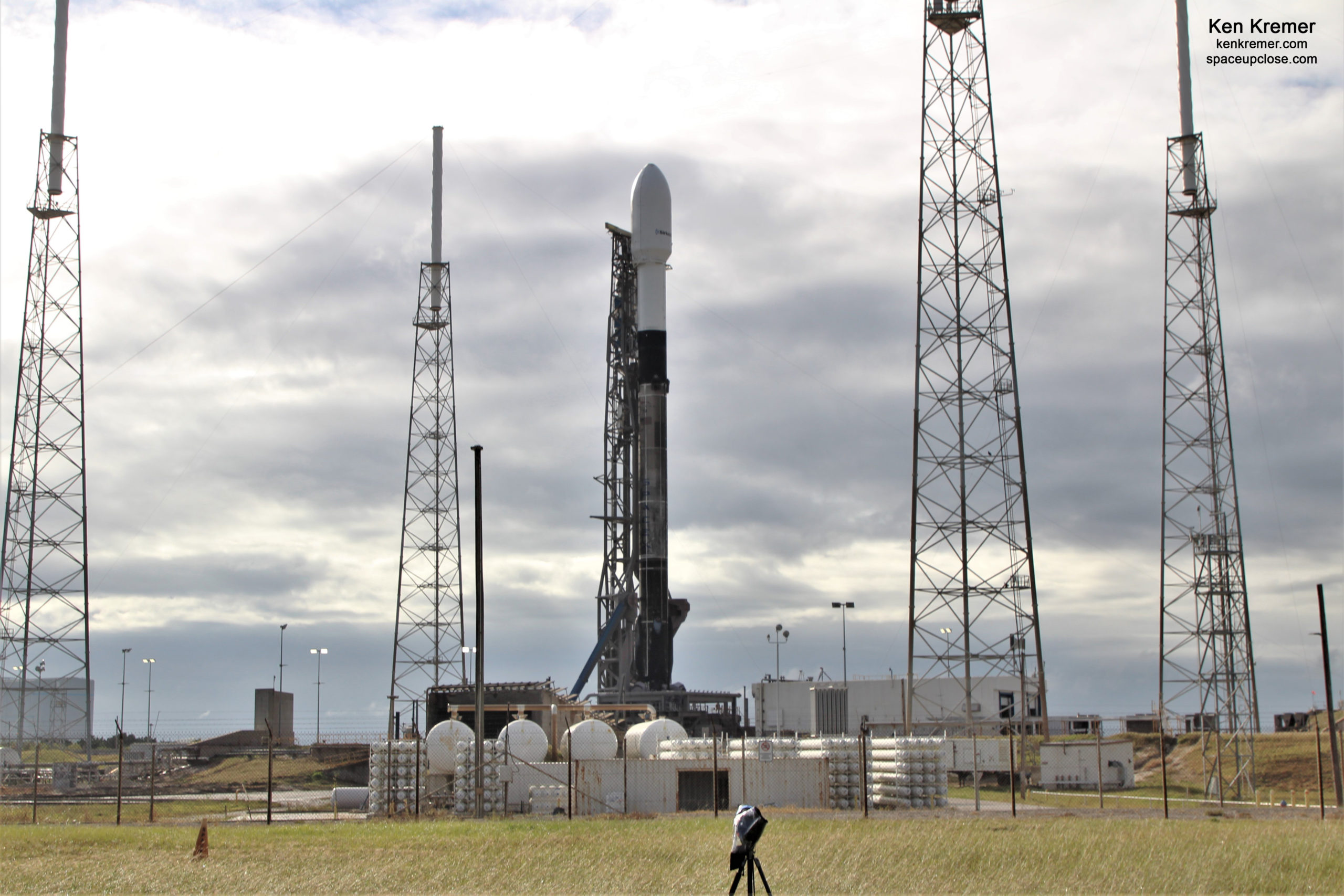
In fact back to back launches just over 15 hours apart had been targeted for the ULA Delta IV Heavy and SpaceX Falcon 9 on Thursday evening and Friday morning – until the SpaceX abort less then one minute for launch Friday.
SpaceX said Friday’s abort was related to ground systems at pad 40.
“Standing down from today’s launch attempt to perform additional ground system checkouts; teams are working toward no earlier than Sunday, December 13 for next launch attempt of SXM-7,” SpaceX tweeted.
Standing down from today’s launch attempt to perform additional ground system checkouts; teams are working toward no earlier than Sunday, December 13 for next launch attempt of SXM-7
— SpaceX (@SpaceX) December 11, 2020
The liftoff time had already been delayed from the opening of the window due to strong upper level winds.
Everything appeared normal including LOX venting until the abort was called by SpaceX engineers at T Minus 30 seconds.
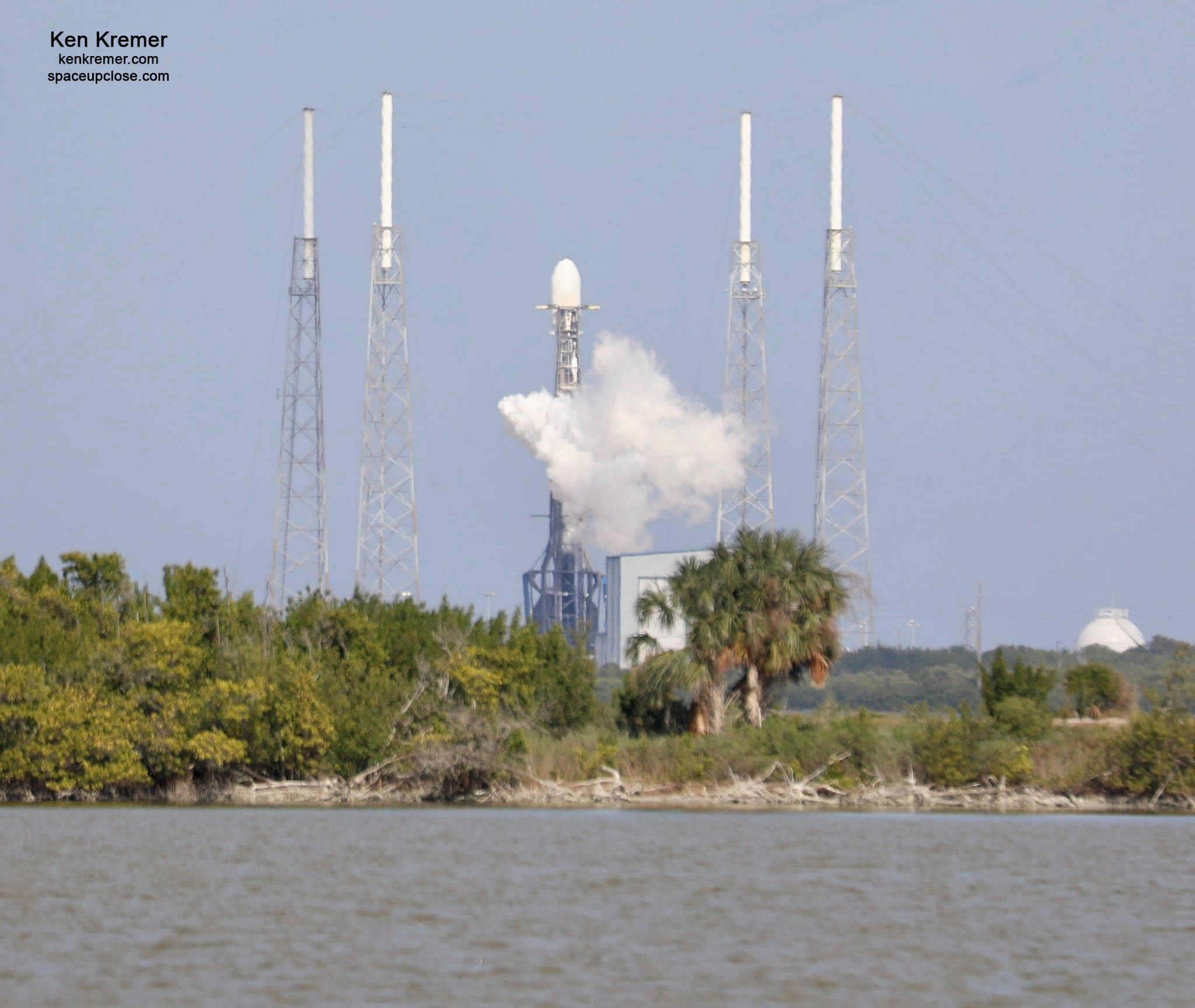
SpaceX is targeting Sunday, Dec. 13 at 11:22 a.m. EST, or 16:22 GMT for launch at the opening of a nearly 2 hour long window for the SXM-7 satellite from Space Launch Complex-40 (SLC-40) on Cape Canaveral Space Force Station, in Florida.
Weather outlook is currently moderate
Meteorologists with the 45th Space Wing forecast a 60% chance of acceptable conditions.
Primary concerns is the Cumulous Cloud Rule.
Booster recovery on JRTI and upper level winds are assessed at low risk.
In case of a delay for any reason a 24 hour scrub opportunity is available on Monday, Dec. 14 the outlook remains at 60% favorable.
Primary concerns are the Cumulous Cloud Rule and Thick Cloud Layer Rule.
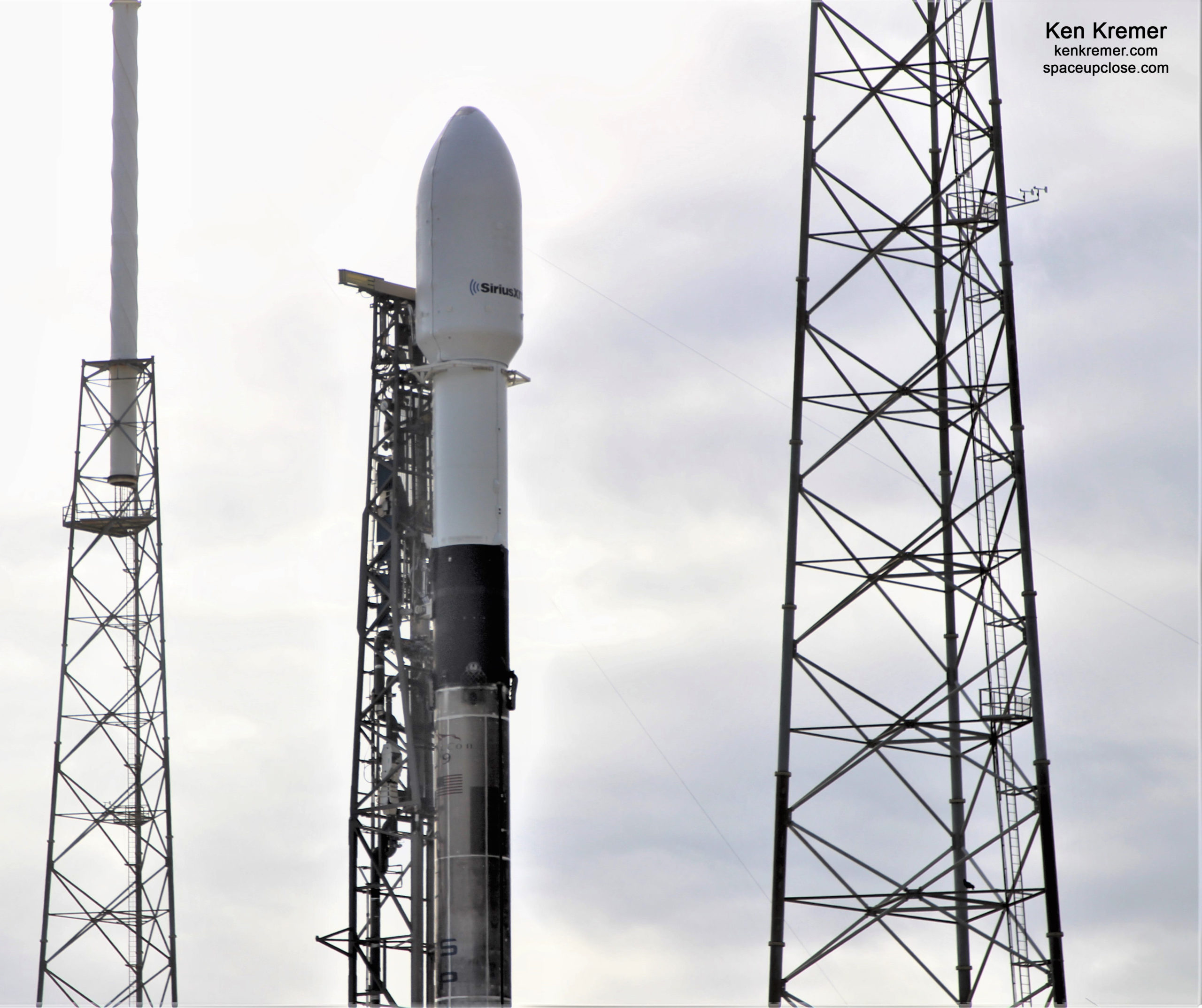
You can watch the launch live at a SpaceX webcast starting about 15 minutes before liftoff.
Enjoy our photos of the SpaceX Falcon 9 rocket raised vertical and taken today by the Space UpClose team of Ken Kremer and Jean Wright during our media remote camera setup at pad 40 poised for liftoff Sunday

The Falcon 9 first stage rocket booster supporting this launch previously supported six mission – including Crew Dragon’s first flight to the International Space Station (Demo-1) in March 2019, launch of the RADARSAT Constellation mission, and four Starlink launches in 2020.
Following stage separation, SpaceX will land Falcon 9’s first stage on the “Just Read the Instructions” droneship, which will be located in the Atlantic Ocean.
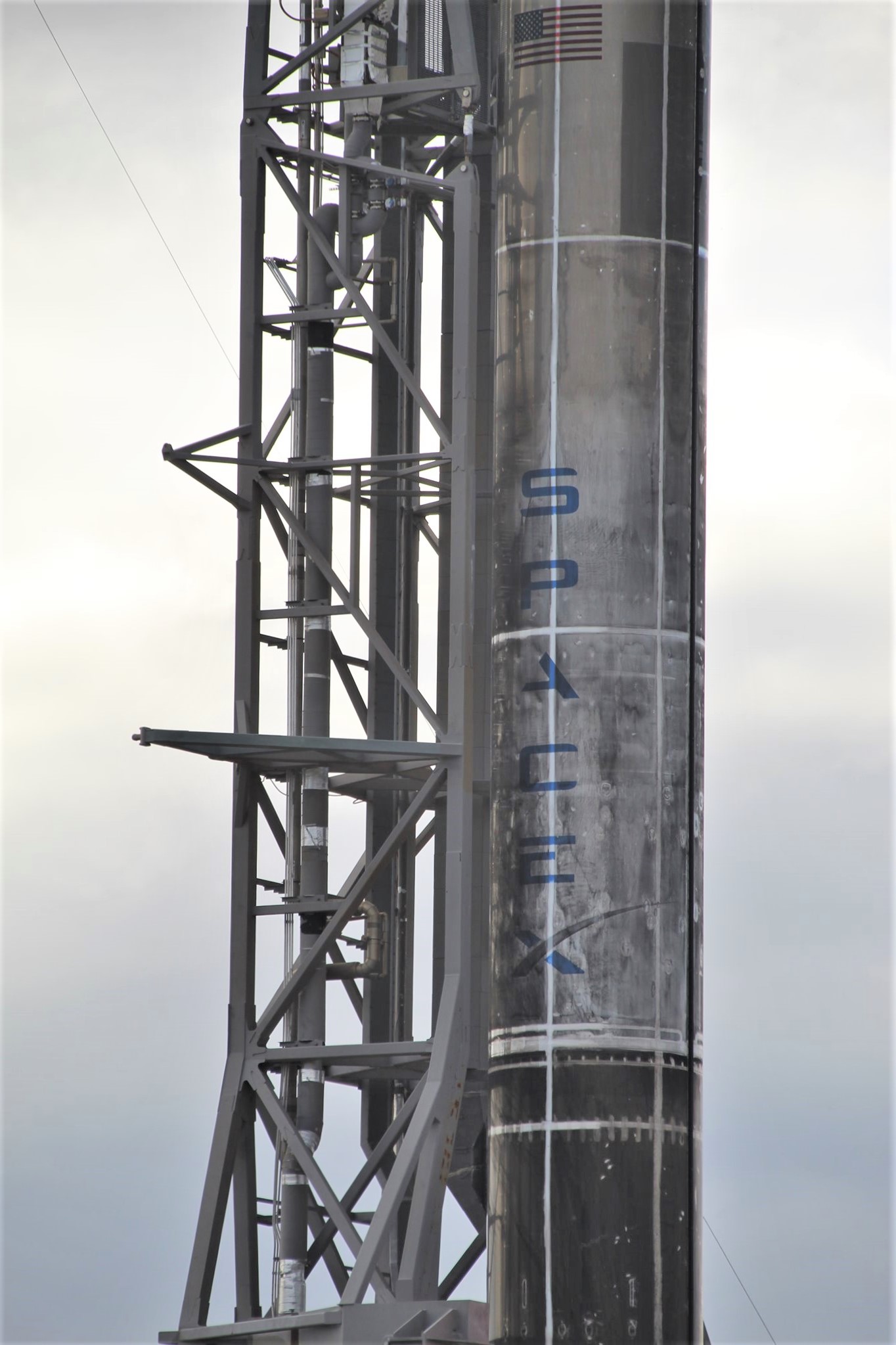
JRTI is already prepositioned offshore of Florida in the Artlantic Ocean downrange approximately 400 miles or 640 km.
One half of Falcon 9’s fairing previously supported the ANASIS-II mission in July 2020.
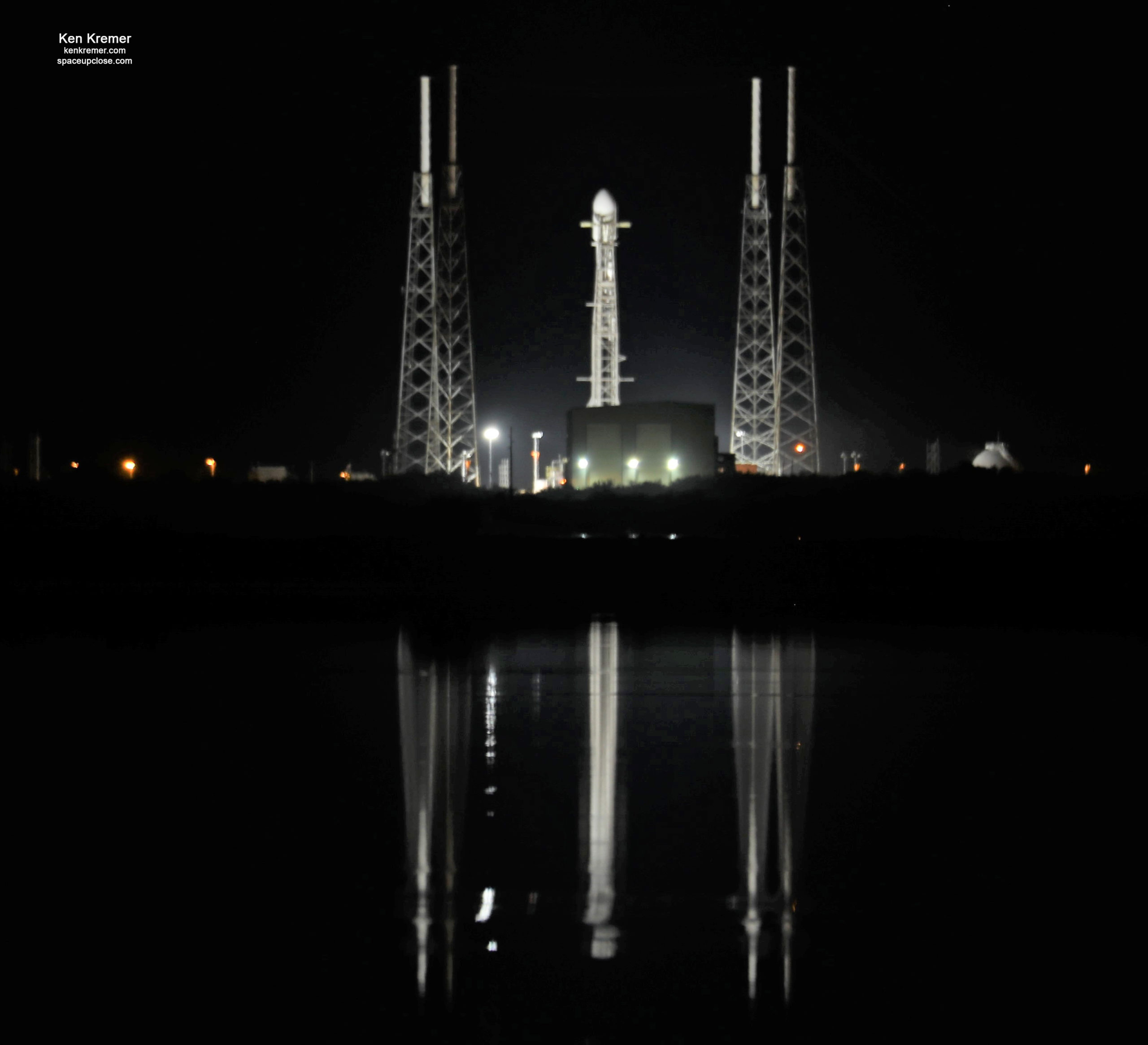
The SXM-7 satellite is built by prime contractor Maxar and weighs almost 7,000 kg.
“On Dec 11, 2020 the powerful Maxar-built SXM-7 digital audio radio #satellite built for @SIRIUSXM will be launched from Cape Canaveral on a @SpaceX #Falcon9 rocket. Once on orbit it will enable broadcasts to mobile radios, such as those in vehicles,” satellite builder Maxar tweeted after the static fire test completed.
On Dec 11, 2020 the powerful Maxar-built SXM-7 digital audio radio #satellite built for @SIRIUSXM will be launched from Cape Canaveral on a @SpaceX #Falcon9 rocket. Once on orbit it will enable broadcasts to mobile radios, such as those in vehicles. https://t.co/6e4Bx83TJ6
— Maxar Technologies (@Maxar) December 8, 2020
SIRIUSXM will use SXM-7 to ensure continuous and reliable delivery of SiriusXM’s entertainment and data services to tens of millions of subscribers across North America.
SXM-7 will deliver the highest power density of any commercial satellite on-orbit, sending more than 8,000 watts of content to the continental U.S., Canada, Puerto Rico and the Caribbean, increasing the quality of signal for SiriusXM subscribers.
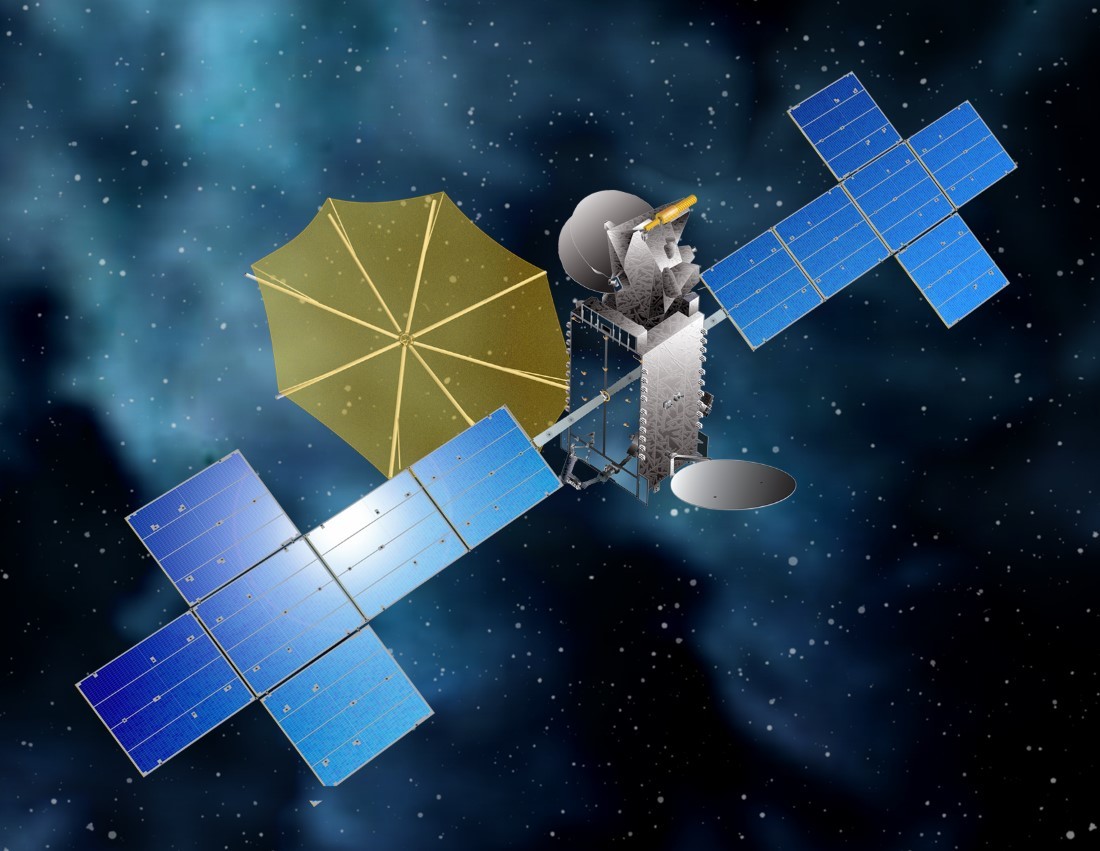
SXM-7 will be carried to geostationary orbit by the SpaceX Falcon 9 rocket.
The satellite is built on Maxar’s 1300-CLASS PLATFORM and it is designed to provide service for 15 years or longer.
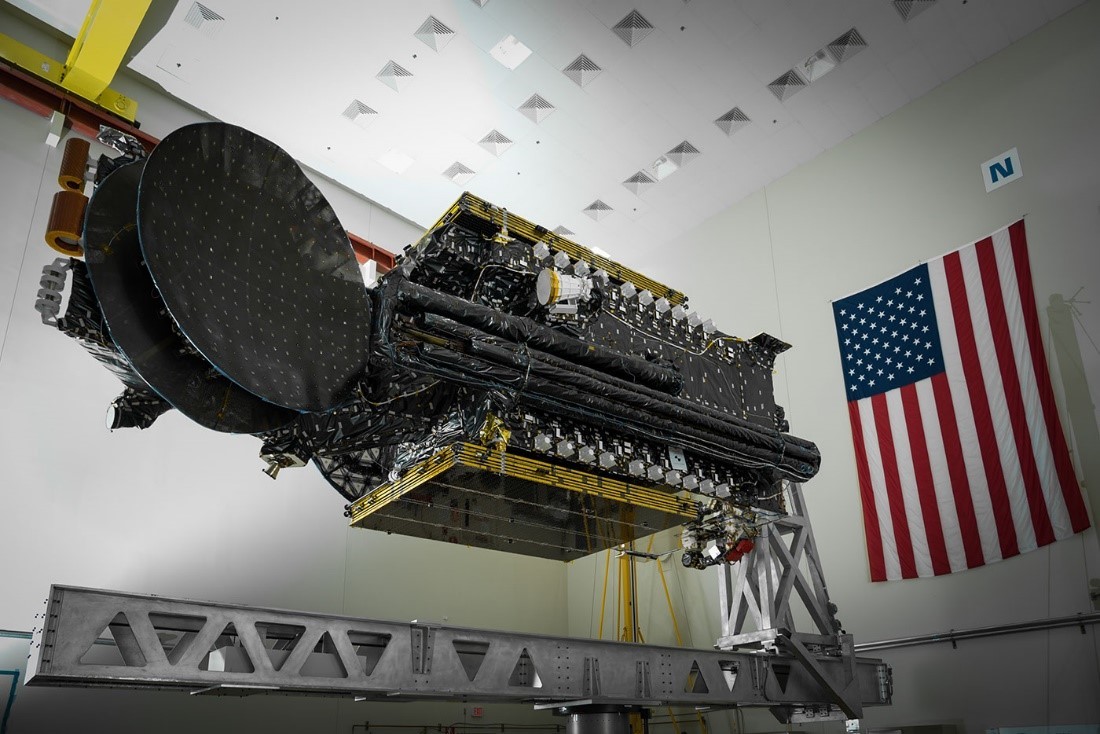
“Once on orbit, the satellite will deploy a large unfurlable antenna reflector, which will enable broadcasts to mobile radios, such as those in moving vehicles,” says Maxar in a statement.
“Maxar is also currently manufacturing SXM-8 for SiriusXM, which is expected to launch in 2021. Maxar has previously built a total of seven satellites for SiriusXM, including its first-generation Sirius satellites that were launched in 2000 and its second-generation Sirius satellites that were launched in 2009 and 2013.”
The path to launch was cleared following a successful post sunset hold down static fire test conducted on Monday, Dec. 7’
The brief hold down static fire test of the 2nd 7th time to be flown Falcon 9 rocket booster with no nose cone attached was carried out precisely at 6 p.m. Monday evening (2300 GMT) Dec. 7 after earlier gloomy, rainy skies dissipated a few hours before the test and into multi hour long test window.
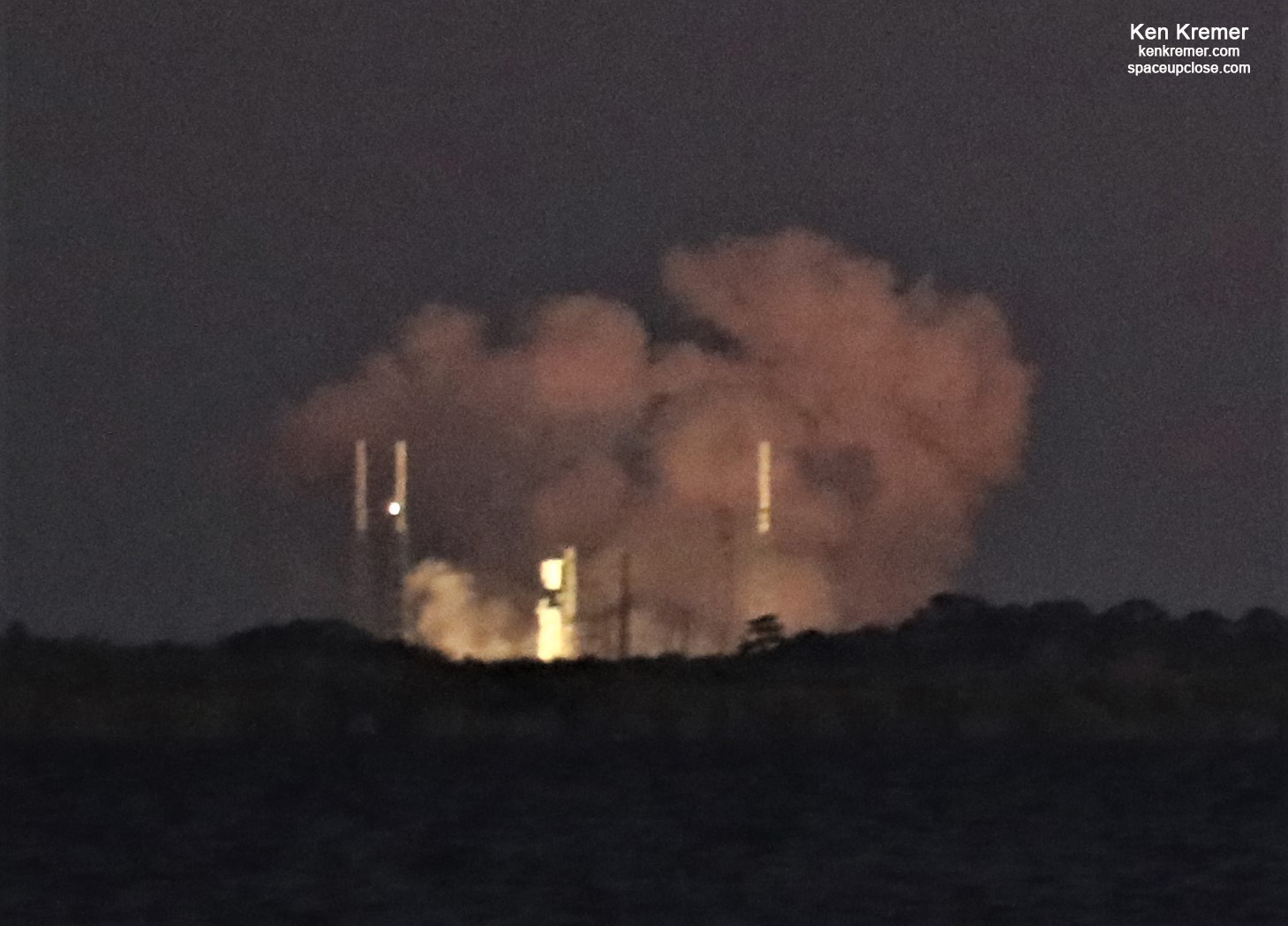
I watched the early evening engine test Monday from nearby in Titusville, Fl about a dozen miles away across the Indian River lagoon and observed the exhaust plume and vapor cloud emanating from the bottom of the booster – just barely visible in the post sunset darkness.
Enjoy my photos of the static fire test.
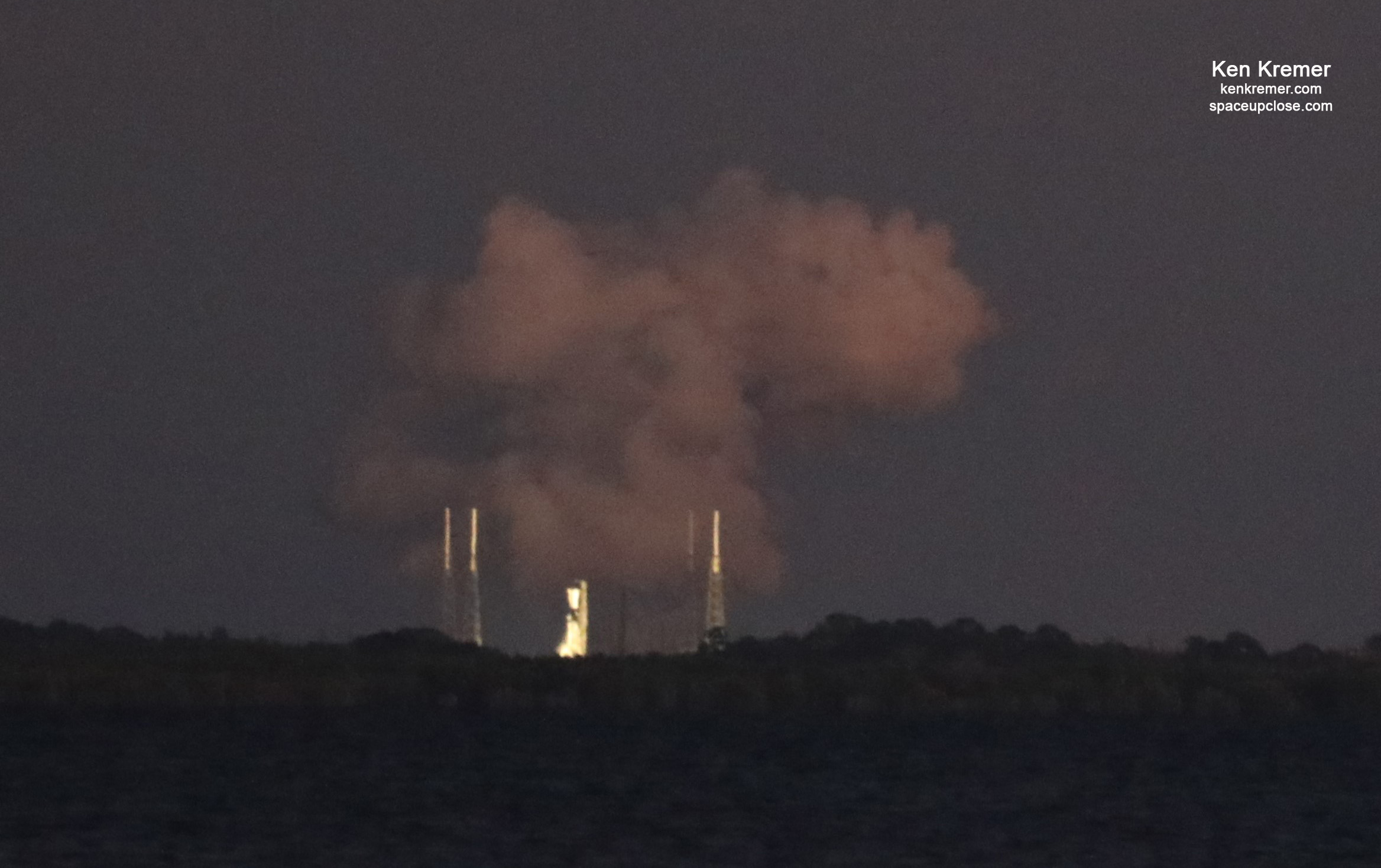
My comments on WFTV Ch 9 ABC News Orlando about rapid cadence of Space Coast launches this week ! 3 total from ULA and SpaceX and officially renaming the bases, aired Dec 19/11. Now Cape Canaveral Space Force station.
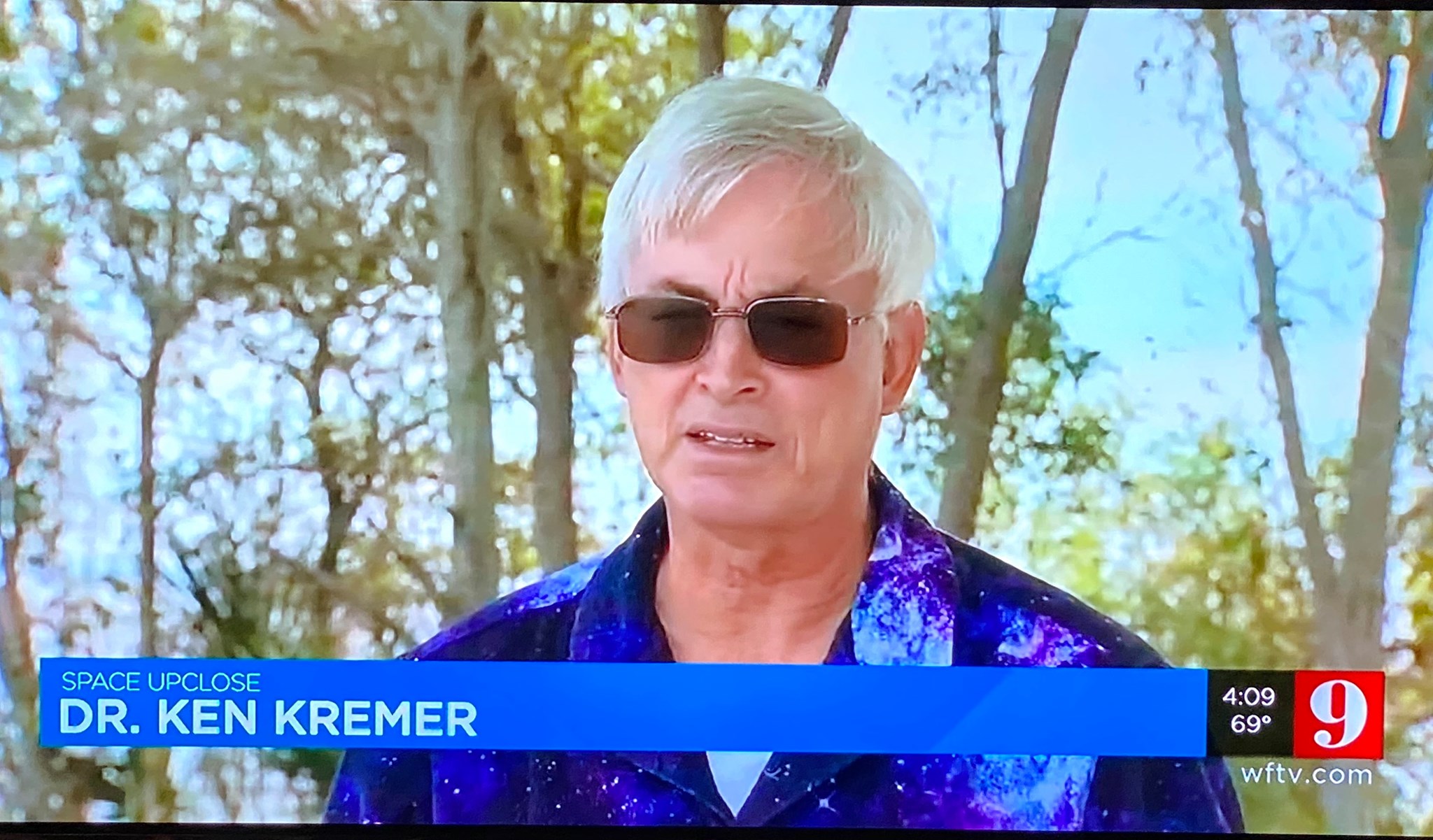
Watch Ken’s continuing reports about SpaceX Cargo and Crew Dragons, Starlink, Commercial Crew and Artemis and onsite for live reporting of upcoming and recent SpaceX and ULA launches including Crew-1, Starlink, X-37B, Solar Orbiter, Mars 2020, NRO spysats and more at the Kennedy Space Center and Cape Canaveral Space Force Station.
Stay tuned here for Ken’s continuing Earth and Planetary science and human spaceflight news: www.kenkremer.com –www.spaceupclose.com – twitter @ken_kremer – email: ken at kenkremer.com
Dr. Kremer is a research scientist and journalist based in the KSC area, active in outreach and interviewed regularly on TV and radio about space topics.
………….
Ken’s photos are for sale and he is available for lectures and outreach events
Please consider supporting Ken’s work by donating at Patreon:
https://www.patreon.com/kenkremer
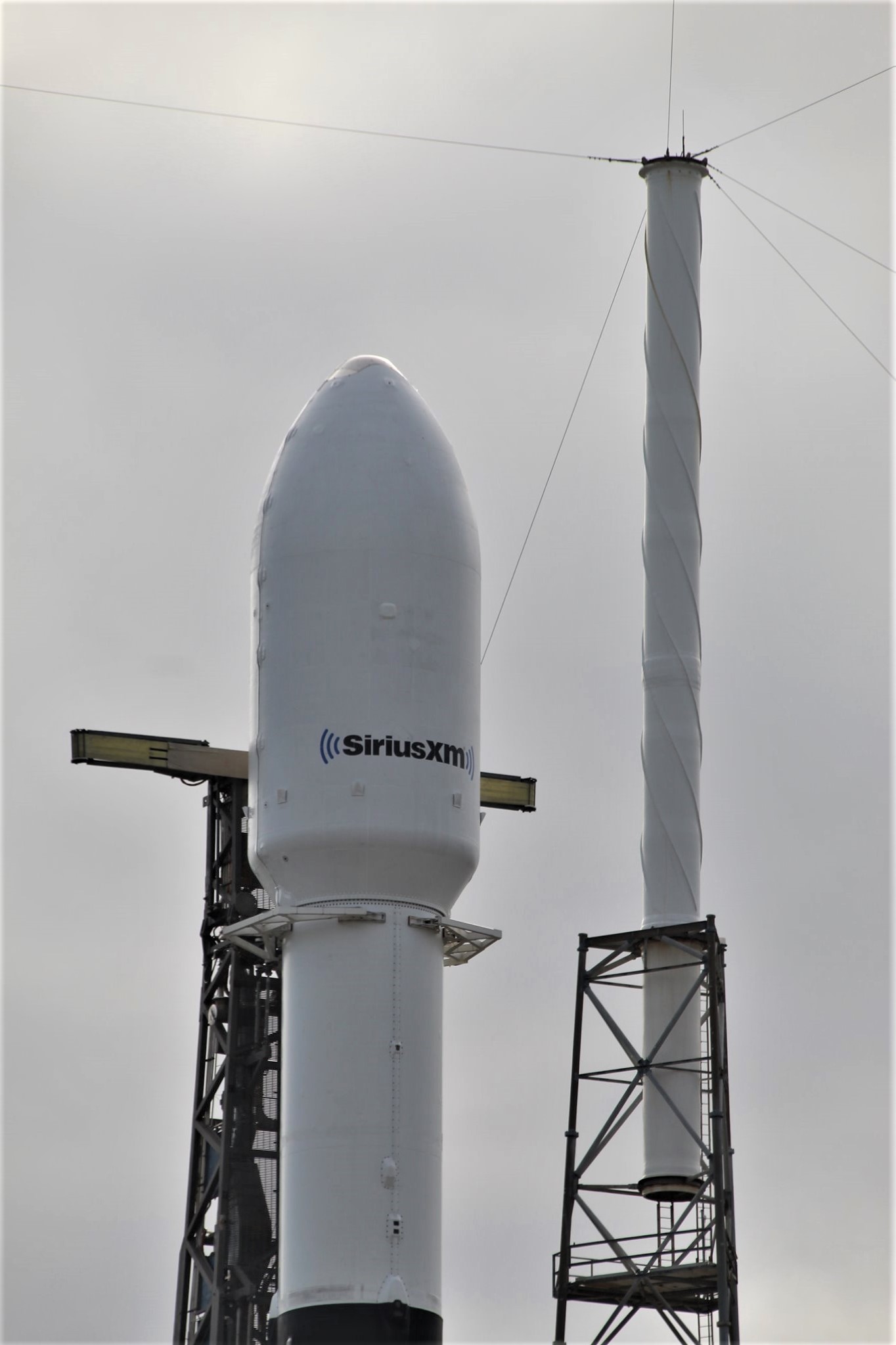
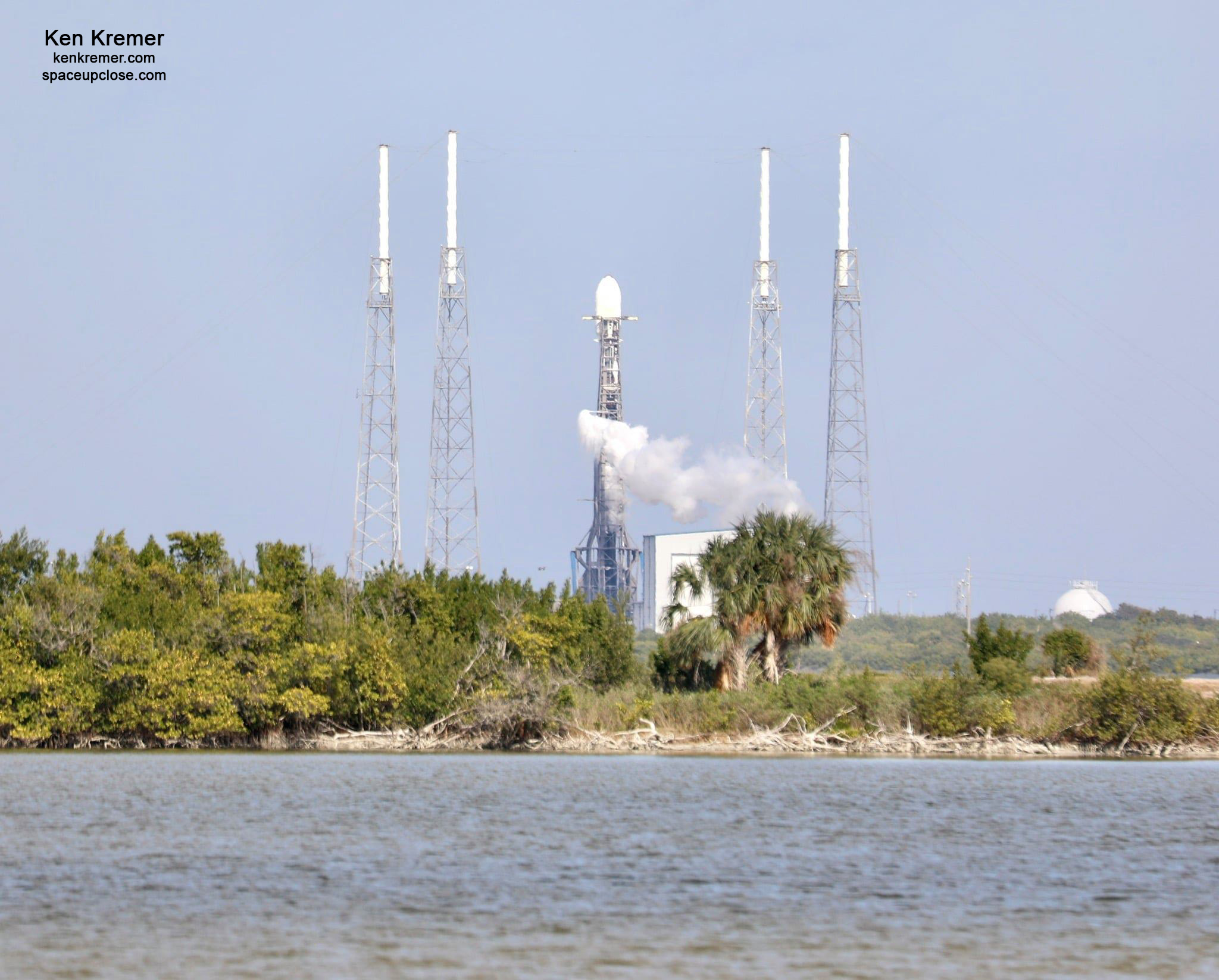
x


